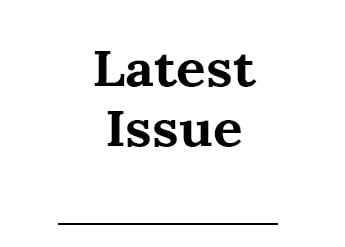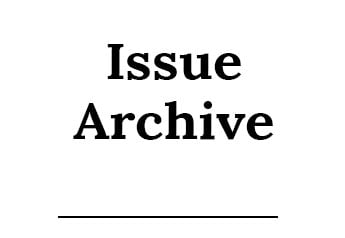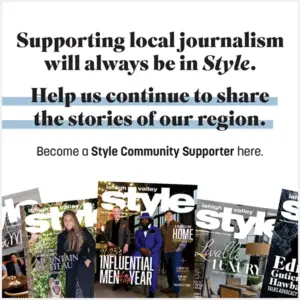
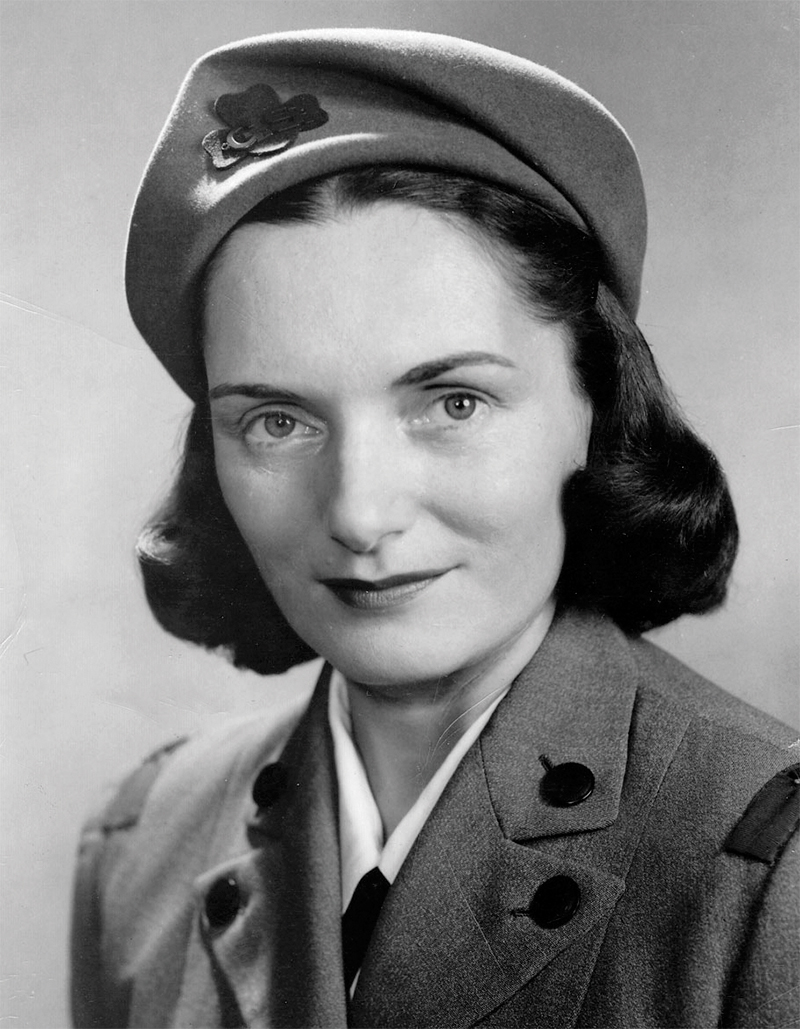
She is one of the preeminent voices on leadership, and the go-to guru for colleges, corporations and non-profits that are in need of direction or inspiration. She's authored three autobiographies, and co-edited 27 books in 29 languages. She was the first woman to chair a United Way campaign. She's been decorated by one U.S. president, and bear-hugged by another. And Lehigh Valley transplant Frances Hesselbein says she owes a large part of her success to lessons learned in her hometown of Johnstown, where she came of age during the Great Depression. “Big steel. Big coal. Big-hearted community. Wonderfully diverse town,” she recalls of the small city 67 miles east of Pittsburgh. Her father was one of the first mounted State Police officers in the country. It was in Johnstown that she met her future husband, John, when she was just 15 years old. He, 17 years old at the time, was an “older man,” jokes Hesselbein. She says she assumed she would make her life and career in Johnstown; she even entertained notions of becoming a poet. “I was determined to stay there. I never wanted to leave.”
But, although she didn't know it at the time, fate had other things in store for Hesselbein, when, in the early 1960s, she strode into the basement of Johnstown's Second Presbyterian Church.
Married with a young son at the time, Hesselbein had been more or less guilted into taking over for the departing troop leader of Girl Scout Troop 17. “I told them, ‘I don't know anything about little girls. I have a little boy.'” But Hesselbein relented after she was told the troop would be disbanded without a leader. “I told them, ‘No, no. Don't do that.' I'd take over the troop for six weeks.” She remembers meeting her new charges for the first time in that church basement, a room full of 30 high-energy, boisterous 10-year-old girls, bouncing off the walls. “I told them I was their new leader, and that's the last time I introduced myself to them like that,” she says. Fast-forward eight years later, and the girls of Troop 17 were graduating from high school, and Hesselbein was still at the helm. “To this day, the first birthday cards I get are from two of my girls from long ago,” says Hesselbein.
During those eight years, she continued to rise in the ranks of the Girl Scouts. In 1976, she got a phone call from Girl Scouts of the USA, who wanted her to interview for the organization's CEO position in New York City. “I was going to send them a sweet note, telling them I couldn't leave Pennsylvania,” she recalls, but Hesselbein's husband convinced her to travel to the Big Apple to hear them out—in fact, he drove her there himself. When the board asked her what her priorities would be as the person calling the shots for the entire organization, she said she thought a complete overhaul was in order. Hesselbein says she felt free to speak her mind, because the job didn't seem like a real possibility. The next day she had the position, and she had her work cut out for her.
While Girl Scouts of the USA was the largest organization for girls in the entire world, Hesselbein says it was lacking in diversity in its membership base. The goal, she says, was for girls of every race and ethnicity to feel valued by their leaders, and to be mirrored in their fellow Scouts. As a gauge of her progress as the organization's leader, Hesselbein says she would ask herself, after considering girls from every corner of the country, and of every race and economic class: “When they look at us, can they see themselves?” Hesselbein says, eventually, she knew she had succeeded when the answer was a resounding, “YES. Yes they can.” Empowerment was also a priority. The Girl Scouts tossed out their old handbook, which was chock-full of the standard domestic proclivities of the day like cooking and sewing, in favor of a new handbook that stressed math, science and technology.
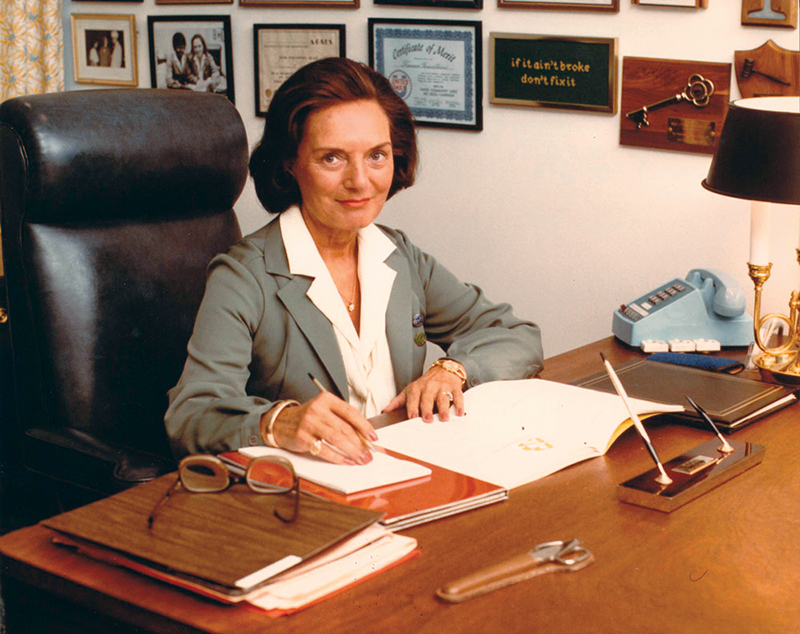
During Hesselbein's tenure, Girl Scouts membership swelled to 2.25 million, including a significant bump in minority representation. She is also credited with kick-starting the Daisy Scout program. But, by 1990, Hesselbein knew it was time to move on. “You always know when it's the right time to go,” she says. Looking back, she has nothing but fond memories of her lengthy stint with the organization. “I never had a bad day. I had a few tough ones, but never a bad one. And the last year was the most exuberant.”
A chance meeting, bolstered by a dose of those good old-fashioned Johnstown values, would lead to the next phase of her career. In 1981, while Hesselbein was still with the Girl Scouts, she was invited to attend a dinner and speech hosted by famed business visionary and management consultant (and native of Vienna) Peter Drucker. The event was slated to begin at 5:30 p.m. Hesselbein says, when she showed up right on time, she found herself in an empty room, alone with three bartenders. “In Johnstown, 5:30 means 5:30,” she says. But soon, she heard a booming voice behind her, and there stood Drucker himself. “I was so shocked,” Hesselbein says. “I guess 5:30 in Vienna means 5:30, too! I never expected to meet him. I forgot my manners, and I blurted out, ‘Do you know how important you are to the Girl Scouts?' And he smiled and said, ‘No, tell me.'”
Thus began a professional partnership that would span more than two decades. Drucker made good on a promise to spend a day at Girl Scouts headquarters in New York in the near future. Later, Hesselbein says, he would deem it the best-run organization in the country. And it would be Drucker who would help Hesselbein write the next chapter of her career. Just days after leaving the Girl Scouts, Hesselbein says she and some of her contemporaries who also admired Drucker were discussing ways to get him more exposure in the public eye. A brainstorming session begot the idea to create the Peter Drucker Foundation for Non-Profit Management. They presented their ideas to Drucker, and he was on board. But Hesselbein, who expected to be named board chairwoman, says Drucker had one request: “He said, ‘You'll be the CEO and run it, or it isn't going to work.'” And so she was.
Drucker died in 2005, and the foundation was renamed in Hesselbein's honor in 2012, over her good-natured protests. She still serves as president and CEO of the Frances Hesselbein Leadership Institute today. She says the need for leadership is greater now more than ever before. “We are looking for leaders of quality and character that will bring us together,” she says. She worries about the lack of respect that's prevalent in public discourse today. “We might not agree with someone. But we respect their position, and we respect them.” But, Hesselbein says, the basic tenets of the leadership institute that bears her name haven't changed much over the years. Leaders, she says, should be mission-based, values-based and demographics-driven. “It's a matter of how to be. Not how to do.” And that mission should be clear and concise: “Short enough to fit on a T-shirt,” she says, a mantra she picked up from Drucker.
Hesselbein's wisdom and dedication to leadership development have made her an in-demand public speaker and consultant. She's also racked up a lengthy list of honors and accomplishments, including lifetime achievement awards from ATHENA International, Best Practice Institute, the Girl Scout Council of Greater New York and the International Leadership Association. She also has received 21 honorary doctoral degrees, and she's landed on Fortune magazine's list of the 50 most important leaders (a distinction shared by Pope Francis and Taylor Swift, among others). But of all the hardware in her trophy case, perhaps no accolade is as impressive as the award that got her a VIP invite to Washington, D.C.—twice. In 1998, President Bill Clinton bestowed on her the Presidential Medal of Freedom, our nation's highest civilian honor. She was singled out for her leadership of Girl Scouts of the USA. Clinton called her a “pioneer for women, volunteerism, diversity and opportunity.” “I've never quite recovered from it,” Hesselbein says. “It was an amazing experience.”
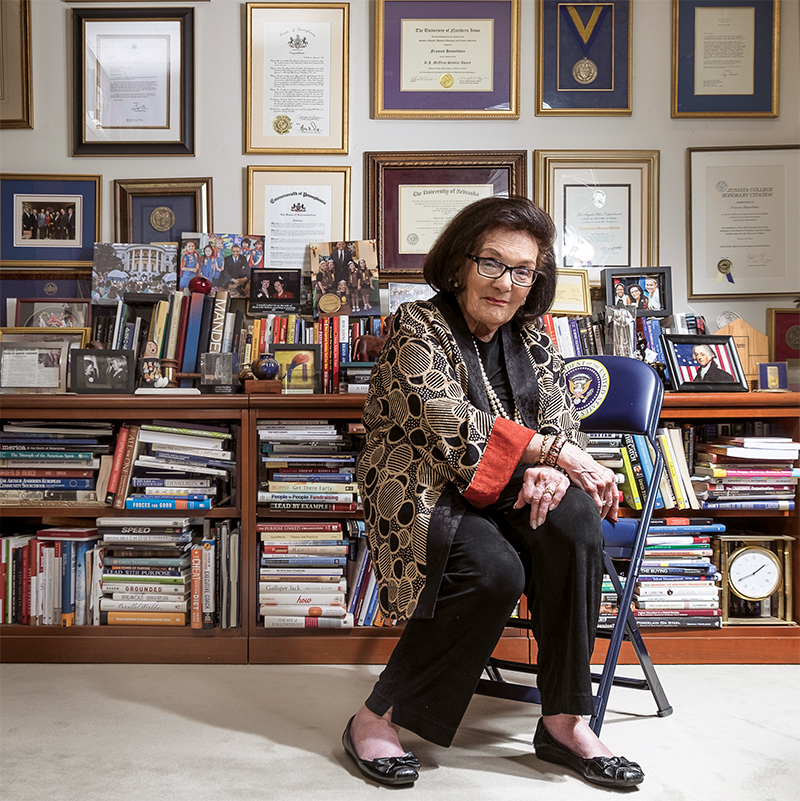
Hesselbein was invited back to Washington by President Obama in 2013 to mark the 50th anniversary of the establishment of the Medal of Freedom by President John F. Kennedy. Hesselbein says all of the attending recipients were invited to come forward to shake the hand of President Obama and First Lady Michelle Obama and to exchange pleasantries. “I meant to say, ‘Thank you, Mr. President,' but instead I spoke from the heart,” she recalls. “I said, ‘I truly believe in the end, you're the one who will sustain democracy.'”
That's when, Hesselbein says, the president broke out in an ear-to-ear grin, and wrapped her in a big bear hug.
The woman who's climbed to the highest peak of professional success and hobnobbed with presidents became a Lehigh Valley resident about 25 years ago. Right around the time she was leaving the Girl Scouts, she was looking for a new home. She dismissed suggestions to head south to that popular sun-drenched haven for retirees: Florida. “I couldn't figure it out,” she says. “Nothing felt like home.” But she had fond memories of childhood summers spent at a relative's home in Easton. And, after speaking to family who still live in the area, the deal was sealed. “Easton is where I belong. I've never regretted [moving there],” she says. “It's very much home, and I love it.” And Easton seems to love her right back. She celebrated her 100th birthday in 2015 with a party at the Pomfret Club, organized by the United Way of the Lehigh Valley Leadership Council.
That's not to say that Hesselbein has abandoned the big city—far from it. She still maintains a residence in New York City near her institute's office on Park Avenue. “I have a rule. Never live farther than seven blocks from your office,” she says. And you'll find her in that office three days a week, continuing the work that has both emboldened her and fulfilled her for several decades. As for her legacy, Hesselbein says she hopes she's remembered for truly practicing what she preaches. “Mission. Innovation. Diversity. Those words are my battle cry,” she says.









